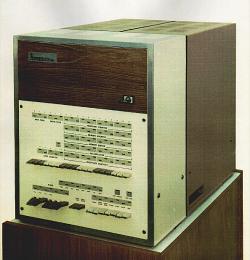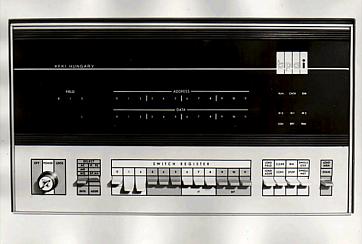The success of the TPA1001 has brought fresh blood into the MSZKI: young graduates started to work there, one of the new tasks was to re-implement the 1001 using 74-series TTL ICs. The new machine completed the final testprogram (called T2) on the 15th of March, 1971. for the first time: the TPA-1001/i was born (the name has been changed to TPA/i or TPA-i later). The first series was called the "high i's" bacause of their mechanical construction. The picture on the top of the page shows such a machine, you can see one opened up on this picture. The manufacturing of this enclosure was too complicated and expensive, so the later /i's had a redesigned clothing, which looked a lot like the original PDP-8s (and the later TPAs).
Configuration:
- Central processing unit:
- Memory:
- Peripherals, mass storage:
12 bit wordlength, 5 hardware registers, parallel aritmetics
ferrite core memory with 1.5 usec cycle time,
4Kword, expandable to 32Kword in 4K units
console teletypes (ASR33, MOD390),
papertape reader/punchers,
line printers,
fix-head drives with fixed flexible disks (NC245 "foil disk"),
floppy drives,
fix-head fixed disk (DISCMOM),
cartridge disk drives (DRI MOD4043, CDC 9425),
disk pack drives (EC5052, EC5053),
magtape drives (ES5012, CDC608),
real-time peripherals (D/A, A/D, CAMAC, etc),
CRT terminals (Videoton VT340, PI12F),
synchronous and asynchronous serial interfaces, modems,
tablet (GDT-1)
- 19" wide, 6U high unit, in rack-mountable or desktop format
- 140x150 and 290x150 mm PCBs, with one or two 47-pin connectors
- front panel
- three assemblers (SLANG1, SLANG2, SLANG3)
- FOKAL
- FORTRAN II
- MINIBOL (COBOL-like language for data processing)
- INDAL (real-time system)
- Diszk Monitor System
- Tape Library System
- TTS-8 (8-user terminal-oriented timesharing system)

